Rec Sports
Boston student-athletes on how NDUR app helped them succeed – NBC Boston
May is Mental Health Awareness Month and we’re highlighting a new tool that student athletes are trying out to help maintain their physical and mental toughness in competition. For Boston English High School basketball player Nisaiah Nieves, the sport is an escape. “Once you get in the gym, nothing else matters,” he said. For Nieves […]
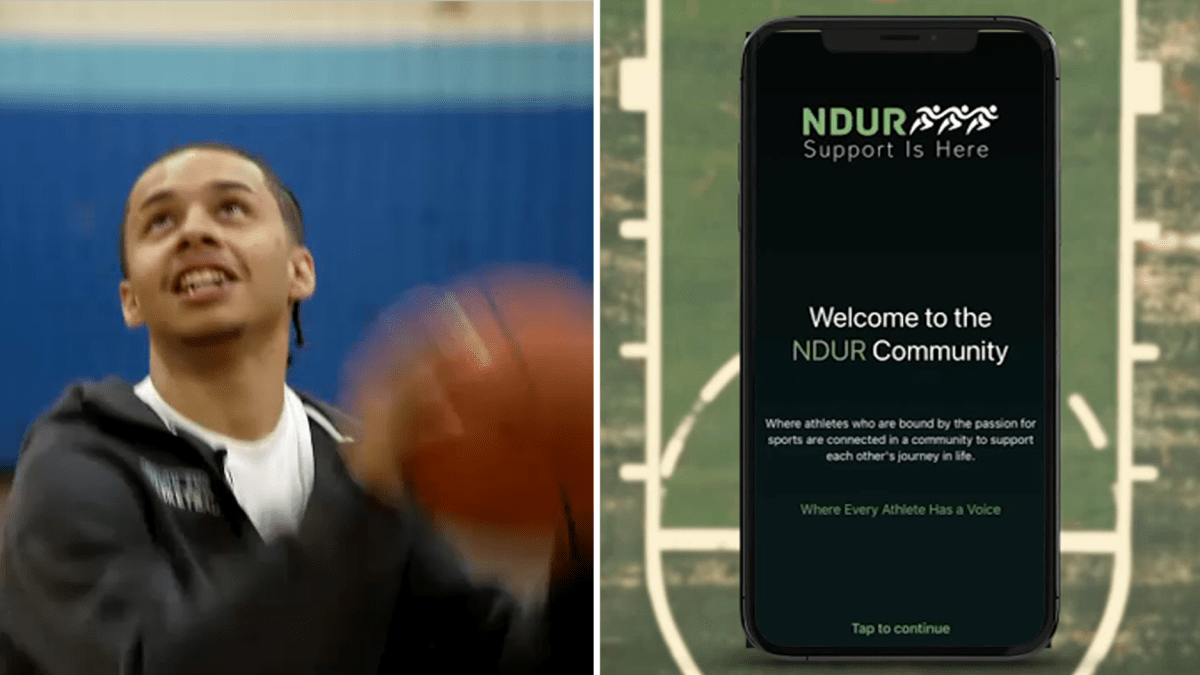
May is Mental Health Awareness Month and we’re highlighting a new tool that student athletes are trying out to help maintain their physical and mental toughness in competition.
For Boston English High School basketball player Nisaiah Nieves, the sport is an escape.
“Once you get in the gym, nothing else matters,” he said.
For Nieves and his teammate Janeuey Brea, playing the sport is more than just a way to stay in shape. It’s an opportunity to achieve goals, make connections and develop leadership skills.
“We tried to talk to each other as much as we can, stay connected. Because at the end of the day, we all had the same goal, the same end goal. We always wanted to win,” Brea said.
And they did — advancing well into the playoffs despite having a brand-new team with players who didn’t speak the same language. They credit a bit of their success this year to a focus on their mental game.
“The mental is like 90% of the game. It’s like 10% physical,” Nieves said.
This past fall, through a partnership with Let’s Play Boston, they met with former NBA Rookie of the Year Michael Carter-Williams, a Massachusetts native, to learn about a new startup, NDUR. Pronounced “endure,” its app provides a unique platform for student athletes to chat with each other on issues and pressures they face.
Carter-Williams has been vocal about his mental health struggles in the league and is a co-founder of NDUR.
The first game for the season was called off when a bus never showed up to take the East Boston High School boys’ basketball team to Fall River.
“Just by, you know, speaking to them about my own issues, it kind of had let them open up about their own issues and it really was impactful,” he said.
NDUR’s president, Darren Orr, has worked with hockey players as an agent most of his career. His father is the legendary Boston Bruin Bobby Orr.
“He had some amazing skills,” said Orr of his father, “and he had a supportive family and all those things that are really important. But he had no one to turn to … to talk about that mental barrier he was running into.”
Orr said NDUR aims to be a free starting point for athletes, meeting them where they’re already at — their phones.
“You can’t always fix every single issue that’s out there. But what we try to do is tamp down those embers before they become a forest fire,” he said.
Through his Marked as Winners foundation, Baltimore Ravens safety Marcus Williams is empowering young people to overcome challenges and achieve their full potential through education and mental wellness.
The young players tell us they’ve taken strategies learned on the app, from others’ first-hand experience, to the court and the classroom.
“Other people like sharing their point of views on their mental state. Like, for example, like an injury, they’re sharing how that affected them. And you can, like, build off of that and either help the person or you can use that information to help yourself as well,” Nieves said.
“Breathing was a big part of, like, processing everything that was going on during the season because there was a lot of stuff we went through and breathing really helped,” Brea said.
NDUR founders plan to incorporate more advice from pro- and collegiate-level athletes on the app to keep the conversation going. The city of Boston is on board hoping this partnership will change the game around mental health.
“The more that we normalize it, the more that people can ask for help and get the help that they need,” said Tyrik Wilson, Boston’s Youth Sports Initiative manager.
“If you make a bad play or you have a bad practice, like, it’s not the end of the world,” explained Brea. “We got each other because this is like a family. It’s brotherhood. So we all hold each other down.”
Rec Sports
Umpire Dies After Collapsing During Youth Softball Tournament amid Heatwave
NEED TO KNOW A youth sports umpire died while officiating a game in South Carolina Mitchell Huggins, 61, was a beloved official who was affectionately known as “Uncle Mitch” Huggins collapsed on the field after complaining of the heat A community in South Carolina is mourning the loss of a longtime youth sports umpire who […]
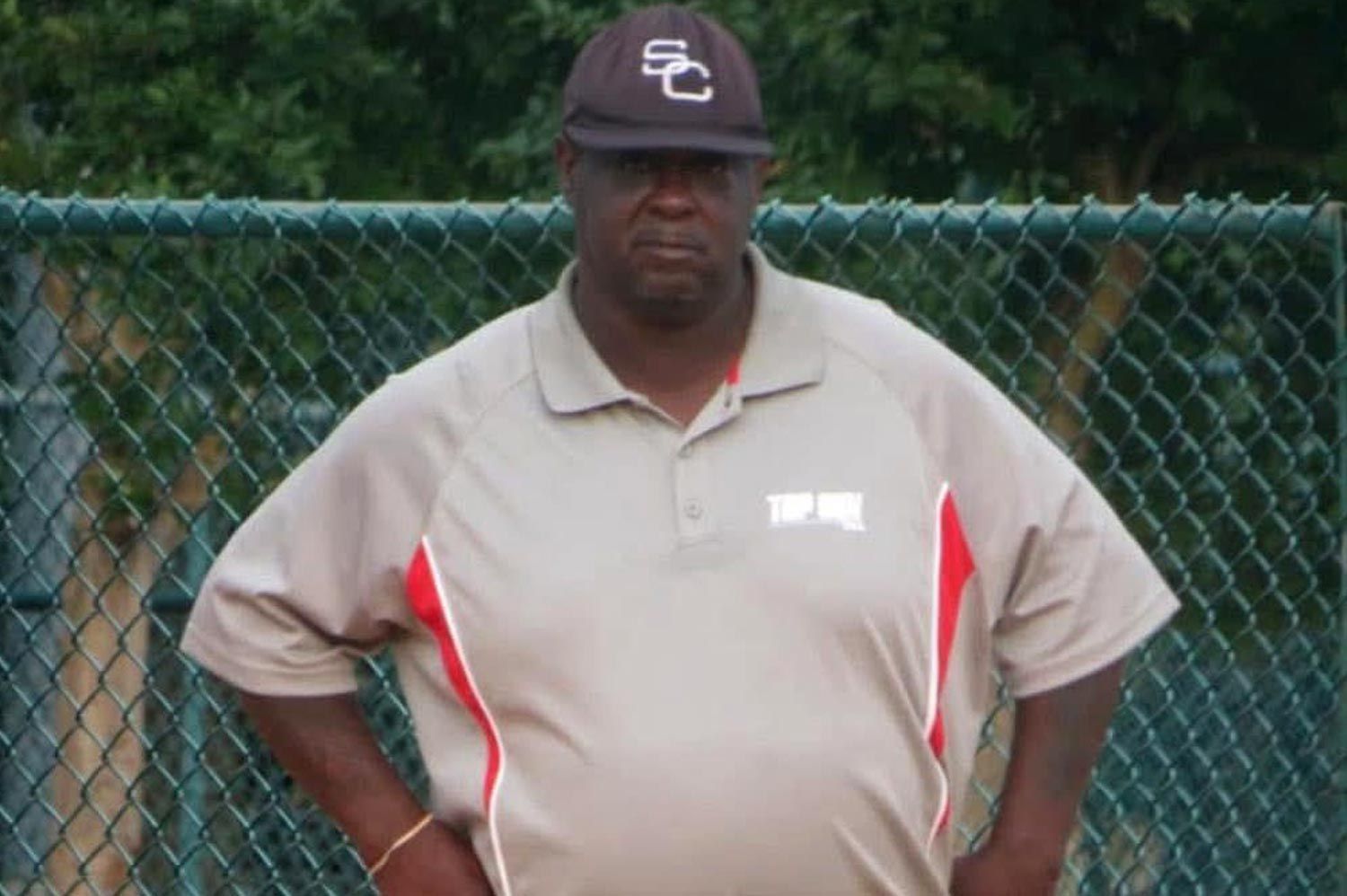
NEED TO KNOW
- A youth sports umpire died while officiating a game in South Carolina
- Mitchell Huggins, 61, was a beloved official who was affectionately known as “Uncle Mitch”
- Huggins collapsed on the field after complaining of the heat
A community in South Carolina is mourning the loss of a longtime youth sports umpire who died amid a record-setting heatwave.
Mitchell Huggins, 61, died on Saturday, June 21 after collapsing on the field while he was officiating a softball tournament at a park in Sumter County, S.C., according to NBC affiliates WIS-TV and KARE-TV and Fox affiliate WACH-TV.
Huggins was pronounced dead at Prisma Health Tuomey Hospital in Sumter at approximately 6 p.m.
The Sumter County Coroner’s Office told WACH-TV that Huggins’ cause of death was due to heat stroke and that an underlying heart condition played a role. The coroner’s office did not immediately respond to PEOPLE’s request for additional comment.
On Saturday afternoon, Huggins passed out while he was working a game, his sister Pamela Rufus told WIS-TV. Onlookers tried to resuscitate him before first responders arrived and transported him to the hospital, she said.
Never miss a story — sign up for PEOPLE’s free daily newsletter to stay up-to-date on the best of what PEOPLE has to offer, from celebrity news to compelling human interest stories.
“He said he was hot,” Christy Pittman, who was at the game with her husband, told KARE-TV. “They tried to cool him down and got him some water. They finally called the ambulance, put him in a wheelchair, and rolled him down to the entrance of the ball field. He just slumped over.”
Temperatures at the time were in the 90s, but in photos taken by Pittman’s husband, a thermometer on the artificial turf field registered 182.5 degrees.
Known as “Mr. Mitch” and “Uncle Mitch,” the family man spent much of his time with youth sports. But according to a GoFundMe for Huggins, he was more than an official.
“Mitch was not just an umpire; he was a prominent figure in our community, recognized for his contagious smile and unwavering commitment,” organizer Wendy Walsh wrote. “His passion for the game of softball and the people involved was always evident.”
Rec Sports
Q&A: Chuck Todd says youth sports could help save local news
This article was originally published by Northwestern University’s Medill Local News Initiative and is republished here with permission. Few people have as much experience in political media as Chuck Todd, who hosted NBC’s public affairs program “Meet the Press” for nine years and worked at the network for almost two decades. He stepped down as anchor of […]

This article was originally published by Northwestern University’s Medill Local News Initiative and is republished here with permission.
Few people have as much experience in political media as Chuck Todd, who hosted NBC’s public affairs program “Meet the Press” for nine years and worked at the network for almost two decades.
He stepped down as anchor of “Meet the Press” in 2023 following a change in management at NBC News and left the network earlier this year. In 2024, he’d criticized NBC on the air for hiring former Republican National Committee Chair Ronna McDaniel as a contributor. The network soon backtracked on the hire.
He’s now the host of “The Chuck ToddCast,” and he’s turned much of his energy toward addressing America’s local news crisis and the collapse of its business model.
His idea: Local youth and high school sports could help resurrect the local news ecosystem.
Medill’s Local News Initiative spoke with Todd last week about why he’s made this a priority of his and how he’s seen the landscape shift through his time covering politics.
Answers have been edited and condensed for clarity and brevity.
Eric Rynston-Lobel: When you first started in politics and media, what do you remember the local news ecosystem looking like?
Chuck Todd: I started professionally in the world of media in 1992. Started working for a publication called The Hotline. What it was was a compendium, or an aggregation — we weren’t using that word then. We were locally sourced political information written for a professional audience here in Washington. I was probably as big of a consumer of local news as anybody in D.C. We tried to get our hands on every Sunday paper we could get, even if it was a day late.
Fast forward to today, if you’re trying to figure out who’s running in a swing congressional seat in Kansas, you might be better off subscribing to Cook Political Report or one of the insider publications in D.C. because there’s nobody who’s a beat reporter for the third congressional district in Kansas anymore. There was a time where there were probably 50 people I would’ve rattled off and said, “Oh, that guy’s the expert in politics in Iowa, in South Carolina.”
Rynston-Lobel: As you’ve seen this infrastructure crumble, what impact have you seen it have on the way politics gets covered as well as the issues people care about and how they’re interacting with their government?
Todd: If the conversation is, “Do you feel like you know what’s going on in your community?” or when you ask people, “How do you find out?” What you end up finding out is, “Well, I got a Facebook group,” or, “There’s a listserv.” “I follow this.” If you want to know what’s happening in your community, we’ve made it where people have to find out on their own. We don’t work the other way. It doesn’t get pushed to them.
The first three hires I would make starting a local news organization would be a lead high school sports reporter, a micro weather forecaster and a consumer/food reporter, somebody who every day lets you know where stuff was cheaper — groceries, restaurants to take your kids. The newspaper was such an elegant delivery system. It had news for news junkies; that’s nice. But it was also the place where you went for commerce, to buy and sell stuff, to find a job, to follow your favorite sports team, maybe to do some puzzles, maybe to entertain yourself. So how do you recreate that experience in this more modern, digital era?
Rynston-Lobel: I want to dive more into this local sports idea. From what I’m understanding, your argument is basically that you see local high school and youth sports as the way to get people to build up that trust, and through that, then you can start delivering other types of information that’s going on beyond sports?
Todd: I view it as the most sustainable stream. I think the nonprofit model has a lot of limitations to it, including the fact that to some people, “nonprofit” is code for “leans left” if you’re not careful. With the whole NIL thing that’s happening in college sports, you have the expansion of opportunities in sports to pay for college, so what’s that going to mean? We’re about to see an explosion in youth sports participation. I have a friend of mine whose kid is getting NIL money for beach volleyball. These universities are all expanding their bandwidth of what sports they want to specialize in. Look at softball: Texas Tech spent $1 million to get the best pitcher (NiJaree Canady), and it allowed them to get to the Women’s College World Series, and they ended up having their best attendance they’ve ever had for softball in Lubbock, Texas. That is going to trickle down.
Think about the demographic of the parents of a kid in youth sports. They’re all under the age of 45, which is a demographic that nobody in the news business has right now. That’s why I think it’s a lucrative base to start from. Too many local news start-ups start with trying to get the news junkies to pay for subscriptions to pay for it, but I think you’re a closed audience there. That instead, you start with the widest-possible pool of people to begin with and also are desirable for advertisers so you can have an ad-based system.
Rynston-Lobel: So what are you envisioning?
Todd: I don’t want news behind a paywall. I think a paywall is for tiers, but the basics should be available to everybody. And then if you want more of something, you pay a little bit extra for that.
My vision is that the local news organization, they hold all the rights for all the youth sports. So if you can’t make it to your kid’s game, you’re watching the livestream on the local news site. They are your conduit.
One of the things I’ve learned as I’ve been doing my own fact-finding to see what publishers are needing, what’s missing out there and all that stuff is a lot of local businesses hate the Google ad network, but there’s really no other alternative. I think if you can build a locally-sourced ad network that doesn’t feel like you’re just having some algorithms decide where your ad shows up, that there’s also opportunity there. But the basic premise is that local sports and youth sports, if you could get that audience, that’s the better audience. It’s a better glue for a community. The red families and the blue families all want to see their kids play. It’s a safe space for advertisers.
Rynston-Lobel: What else have you found as you’ve done more research into this idea?
Todd: If you can find a way to fund journalism indirectly, then maybe you will also do what’s missing in local news right now, which is, the coverage that accidentally informs people who are not looking to be informed. That’s been the missing piece.
There’s a great study that a couple of academics did about 20 years ago. There’s always been this correlation between newspaper delivery to your house and voting. So these academics wanted to see if being forced to have a paper delivered to your house, would that increase the likelihood you would vote in the next local election? And sure enough, it did. Just the act of someone taking that paper off their doorstep and throwing it away, putting it in the recycle bin at least informed them when the election was. There were always members of the community that never intended to read the top stories in the paper, but because they went to the paper looking for something else, they accidentally got informed.
We’ve lost that, and I think the reason why there’s this complete disconnect sometimes between what people know or don’t know is that we’ve lost that one thing that we all looked at; we were all looking at the same headline. The people that didn’t want to be informed got informed of something, too. Now, if you don’t want to be informed, it’s a lot easier to stay away. To me, it’s on the local news organization to provide enough potential ways to get that person to consume something you produce.
If I were The Texas Tribune, I’d hire the best hunting columnist in America and only have them do reviews of new hunting rifles, how to build a better duck blind. What’re you going to do? You’re going to attract that audience that normally doesn’t interact with your news, and maybe over time, that audience, they trust that, “Oh, they hired this person, I trust this person, I really like their advice on what to purchase to make my hunting experience better. Maybe I’ll read their news stories too.” That’s the whole thesis on why local sports is a tentpole.”
Rec Sports
Thornton Hosts Free Youth Basketball Camp After Record-Breaking Season
Story Links THE HILL | The D. Thornton Hoopz Camps and Clinic will host its fourth Annual 2.0 Experience girls and boys basketball camp on Aug. 3 from 9 a.m. to 2 p.m. at the AAMU Event Center, women’s basketball head coach Dawn Thornton announced. The camp is free and open to all […]
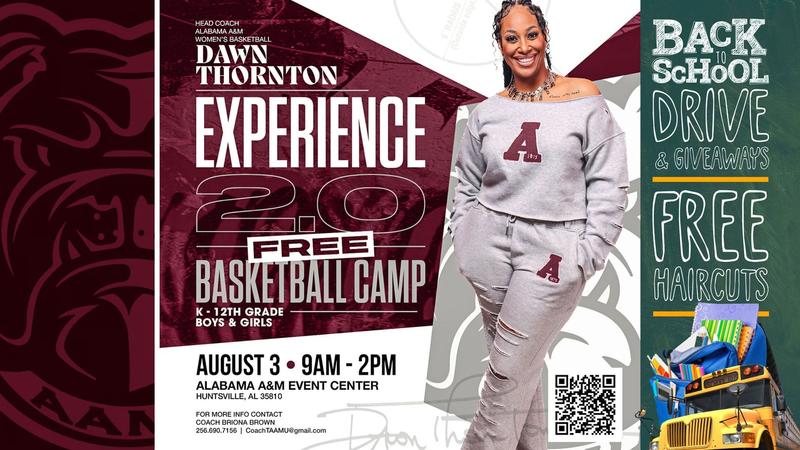
THE HILL | The D. Thornton Hoopz Camps and Clinic will host its fourth Annual 2.0 Experience girls and boys basketball camp on Aug. 3 from 9 a.m. to 2 p.m. at the AAMU Event Center, women’s basketball head coach Dawn Thornton announced. The camp is free and open to all ages, and lunch will be provided.
The camp welcomes players of all levels to develop their basketball skills and knowledge of the game.
“We just made history with the most wins in program history, and that momentum comes straight from the support of this community”, Thornton said. “I’m excited to pour that same energy into the kids- giving them a fun, safe space to learn, grow and fall in love with the game,” she continued. “When I was young, opportunities like this did not always exist, so it means everything to me to be able to create that for them now.”
Participants will receive hands-on coaching, work through fundamental drills, and engage in team-building activities. The camp emphasizes skill development and basketball IQ and will include individual drill work, small sided competitions, as well as high quality instruction and skill development.
“Through my foundation, we are making this camp open to everyone,” Coach Thornton said. “We will focus on skills, teamwork, and building confidence. Campers will also go home with a t-shirt, back-to-school supplies, giveaways, lunch, and a commemorative photo.”
Registration and more information can be found here.
For complete coverage of Alabama A&M Athletics – Huntsville’s only Division I program – check out the official homepage at www.aamusports.com. Follow the women’s basketball team on Instagram and X.
Rec Sports
Niagara Falls Police seek info on woman attacked with stick
The incident began as an argument between a 55-year-old woman and a man at 19th Street and Walnut Avenue, then ended at 19th and Pine Avenue. NIAGARA FALLS, N.Y. — Niagara Falls Police are asking for help after a woman was beaten with a stick on Wednesday. The incident began as an argument between a […]
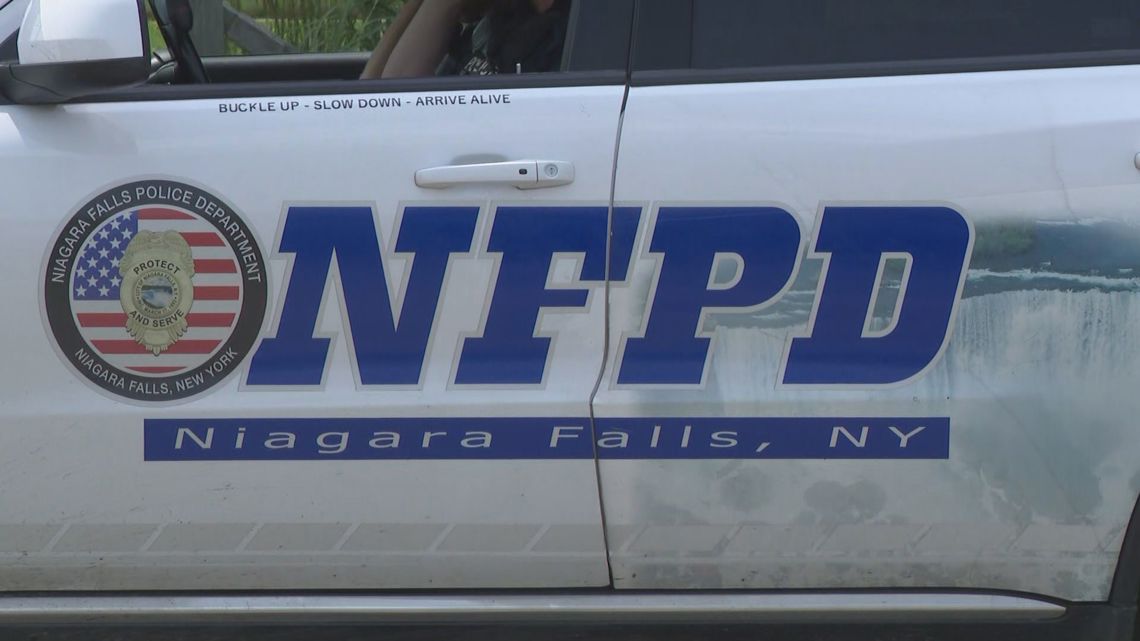
The incident began as an argument between a 55-year-old woman and a man at 19th Street and Walnut Avenue, then ended at 19th and Pine Avenue.
NIAGARA FALLS, N.Y. — Niagara Falls Police are asking for help after a woman was beaten with a stick on Wednesday.
The incident began as an argument between a 55-year-old woman and a man at 19th Street and Walnut Avenue, then ended at 19th and Pine Avenue, according to police, who responded around 10:40 a.m. Wednesday.
The man used a stick to assault the woman, who was responsive at the scene. She was taken by ambulance to Erie County Medical Center to receive treatment for her injuries. Her condition was not immediately listed.
“Detectives in the Criminal Investigation Division are actively investigating this incident and are asking anyone with information to contact the Criminal Investigation Division at 716-286-4553,” police said.
The investigation is ongoing. Neither the victim, nor the suspect’s name will be released at this time.
Rec Sports
Families and businesses are concerned about the effect of tariffs on youth sports
CHICAGO (AP) — Youth sports are a big part of Karli Casamento’s life. Her son, Jax, 15, golfs and plays on three baseball teams. Her youngest son, Colt, 7, plays baseball and basketball. The costs, especially for Jax, add up in a hurry. That’s why Casamento, 48, and her husband, Michael, 46, are watching closely […]
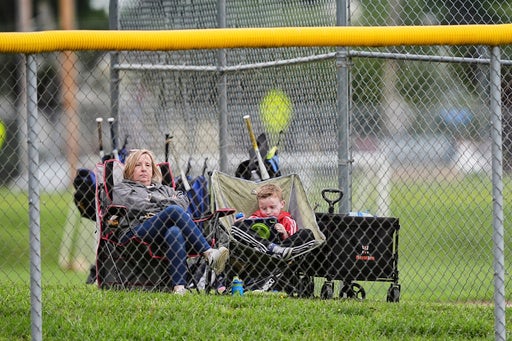
CHICAGO (AP) — Youth sports are a big part of Karli Casamento’s life. Her son, Jax, 15, golfs and plays on three baseball teams. Her youngest son, Colt, 7, plays baseball and basketball.
The costs, especially for Jax, add up in a hurry. That’s why Casamento, 48, and her husband, Michael, 46, are watching closely for the ramifications of tariffs on their rising youth sports budget.
“All of their equipment I’m sure comes from China,” said Karli Casamento, a second-grade teacher in suburban Philadelphia. “As they get bigger, they need new equipment. So that is definitely a concern.”
For families like the Casamentos and businesses in the marketplace, there is continued uncertainty surrounding the possible effects of President Donald Trump’s tariffs — the 10% baseline tariffs, along with a 30% rate on Chinese goods — on youth sports.
Nike, Adidas, Under Armour and Puma were among 76 companies that signed an April 29 letter to Trump asking for a footwear exemption from reciprocal tariffs. The Footwear Distributors & Retailers of America letter warned tariffs would “become a major impact at the cash register for every family.”
Amer Sports, the parent company of Wilson Sporting Goods and Louisville Slugger, downplayed the effect of tariffs when it announced its first-quarter earnings on May 20. But looking beyond this year, chief financial officer Andrew Page mentioned pricing as one way the company could offset higher import tariffs.
Dick’s Sporting Goods reaffirmed its earnings guidance for 2025 when it provided its first-quarter update on May 28. CEO Lauren Hobart said Dick’s had no plans to trim its product assortment in response to tariff costs, and that its guidance confirmation was based on its belief it can manage the situation.
“We are constantly assessing our pricing down to the item level, SKU level, and we do that based on consumer demand and the profitability of the business,” Hobart said in response to a question on possible price increases. “We have a very advanced pricing capability, much more advanced than we used to have, and much more enabled to make real time and quick decisions.”
The U.S. has been the largest importer of sporting goods since 2010, accounting for 31% of the world’s imports in 2022, according to a 2024 World Trade Organization report. Boosted by racket sports, China is the most significant exporter of sporting goods at 43% in 2022.
Fueled by golf, badminton and tennis equipment, Vietnam and Taiwan experienced rapid expansion in exporting outdoor sports equipment to the U.S. from 2018 to 2024, according to data from the consulting firm, AlixPartners. Vietnam increased 340% to $705 million, and Taiwan was up 16% to $946 million.
Tariffs of 46% for Vietnam and 32% for Taiwan could go into effect next month after a 90-day pause.
Hockey skates, sticks and protective gear are often imported. Same for baseball gloves and composite and aluminum bats, which are often imported or use materials that are imported, according to the National Sporting Goods Association. Soccer goals, lacrosse nets and cones are often sourced from low-cost labor markets.
“You can’t get around the fact that a lot the stuff that we use in youth sports is coming from abroad,” said Travis Dorsch, the founding director of the Families in Sport Lab at Utah State University. “So surely if the tariffs go into effect and in any long-term or meaningful way, it’s going to affect youth sports.”
The Casamento family cheers for the Philadelphia Phillies, and that’s how Jax and Colt got into baseball. Karli Casamento called sports “a safe way to socialize, and it gets them active.”
But equipment has become a major expense for the family. Jax has a $400 bat and a $300 glove, Karli Casamento said, and his catching equipment is $700. There is an additional cost for registration for his travel team, in addition to what it costs to travel to tournaments.
“We’ve tried to say to Jax, ‘Well, you’re in ninth grade now, do you really need to play tournament ball? You’re not going to grow up and be, you know, the next Mike Schmidt,’ things like that,” Karli Casamento said, “because it’s just, it’s $5,000 a year and now we have two kids in sports.”
That effect most likely will be felt by middle- and low-income families, threatening recent gains in participation rates for youth sports.
The Sports & Fitness Industry Association, which tracks youth participation by sport, found in 2023 there was a 6% increase in young people who regularly participated in a team sport, which it said was the highest rate (39.8%) since 2015. An Aspen Institute study released in October showed participation for girls was at its highest levels since at least 2012.
“I’m really concerned that we’re going to spike this great momentum because families, who are already saying that sports is getting increasingly more expensive, equipment’s getting more expensive and they’re continuing to stretch to make that work, like this might be the one that just kind of puts them over the sidelines,” said Todd Smith, the president and CEO of the Sports & Fitness Industry Association.
Smith was in China in April for a World Federation of Sporting Good Industries board meeting. He visited some manufacturing facilities while he was in the country.
“The ones that I went to are really, really impressive,” Smith said. “First class, high tech, like highly skilled. And the thought that tariffs are all of a sudden just going to allow a 10-plus million dollar facility to just pop up the next day in the U.S. is just, it’s not feasible.”
Low-income families were already feeling a financial strain with youth sports before Trump was elected to a second term. According to the Aspen Institute study, 25.1% of children ages 6-17 from households earning under $25,000 played a sport on a regular basis in 2023, down slightly from 25.8% in 2022. That’s compared to 43.5% of children from households earning at least $100,000, up slightly from 42.7% in 2022.
Youth sports participation has a wide range of ramifications for public health, said Tom Farrey, the founder and executive director of the Aspen Institute’s Sports & Society Program.
“This incredibly virtuous cycle can be engaged if you can simply get kids off their phones and off their couches and into the game and they have a sustained experience into adolescence,” Farrey said. “And if you don’t, then you’re at risk for a range of health consequences, including obesity.”
Going along with playing on three baseball teams, Jax Casamento has workouts for his travel squad and also takes hitting lessons. The Casamentos turned a baseball trip to South Carolina into a family vacation last year.
Michael Casamento is a physical education teacher in an elementary school, so the family’s concerns about the effect of tariffs on the cost of youth sports go beyond their two boys.
“I work with a lot of kids that are a lower socio-economic status,” Karli Casamento said. “It really makes it harder for those types of families to be able to afford to play sports.”
___
AP sports: https://apnews.com/sports
Copyright 2025 The Associated Press. All rights reserved. This material may not be published, broadcast, rewritten or redistributed without permission.
Rec Sports
Why are youth sports so expensive?
The U.S. has been the largest importer of sporting goods since 2010, accounting for 31% of the world’s imports in 2022. Youth sports are a big part of Karli Casamento’s life. Her son, Jax, 15, golfs and plays on three baseball teams. Her youngest son, Colt, 7, plays baseball and basketball. The costs, especially for […]
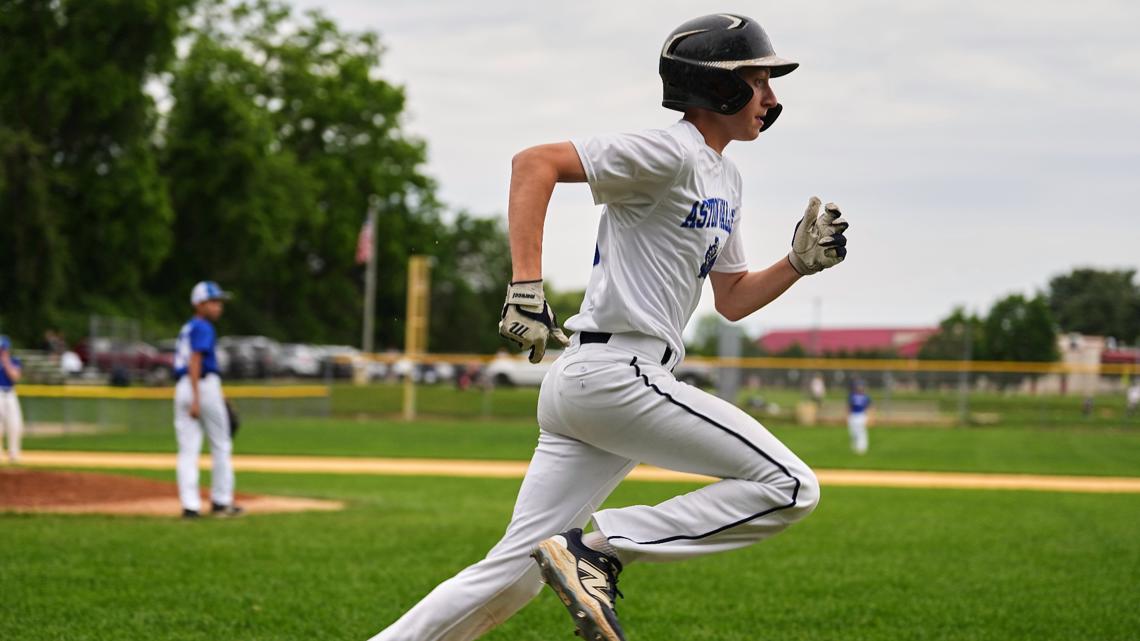
The U.S. has been the largest importer of sporting goods since 2010, accounting for 31% of the world’s imports in 2022.
Youth sports are a big part of Karli Casamento’s life. Her son, Jax, 15, golfs and plays on three baseball teams. Her youngest son, Colt, 7, plays baseball and basketball.
The costs, especially for Jax, add up in a hurry. That’s why Casamento, 48, and her husband, Michael, 46, are watching closely for the ramifications of tariffs on their rising youth sports budget.
“All of their equipment I’m sure comes from China,” said Karli Casamento, a second-grade teacher in suburban Philadelphia. “As they get bigger, they need new equipment. So that is definitely a concern.”
For families like the Casamentos and businesses in the marketplace, there is continued uncertainty surrounding the possible effects of President Donald Trump’s tariffs — the 10% baseline tariffs, along with a 30% rate on Chinese goods — on youth sports.
Nike, Adidas, Under Armour and Puma were among 76 companies that signed an April 29 letter to Trump asking for a footwear exemption from reciprocal tariffs. The Footwear Distributors & Retailers of America letter warned tariffs would “become a major impact at the cash register for every family.”
Amer Sports, the parent company of Wilson Sporting Goods and Louisville Slugger, downplayed the effect of tariffs when it announced its first-quarter earnings on May 20. But looking beyond this year, chief financial officer Andrew Page mentioned pricing as one way the company could offset higher import tariffs.
Dick’s Sporting Goods reaffirmed its earnings guidance for 2025 when it provided its first-quarter update on May 28. CEO Lauren Hobart said Dick’s had no plans to trim its product assortment in response to tariff costs, and that its guidance confirmation was based on its belief it can manage the situation.
“We are constantly assessing our pricing down to the item level, SKU level, and we do that based on consumer demand and the profitability of the business,” Hobart said in response to a question on possible price increases. “We have a very advanced pricing capability, much more advanced than we used to have, and much more enabled to make real time and quick decisions.”
Many of the US’s most popular sports rely on imported equipment
The U.S. has been the largest importer of sporting goods since 2010, accounting for 31% of the world’s imports in 2022, according to a 2024 World Trade Organization report. Boosted by racket sports, China is the most significant exporter of sporting goods at 43% in 2022.
Fueled by golf, badminton and tennis equipment, Vietnam and Taiwan experienced rapid expansion in exporting outdoor sports equipment to the U.S. from 2018 to 2024, according to data from the consulting firm, AlixPartners. Vietnam increased 340% to $705 million, and Taiwan was up 16% to $946 million.
Tariffs of 46% for Vietnam and 32% for Taiwan could go into effect next month after a 90-day pause.
Hockey skates, sticks and protective gear are often imported. Same for baseball gloves and composite and aluminum bats, which are often imported or use materials that are imported, according to the National Sporting Goods Association. Soccer goals, lacrosse nets and cones are often sourced from low-cost labor markets.
“You can’t get around the fact that a lot the stuff that we use in youth sports is coming from abroad,” said Travis Dorsch, the founding director of the Families in Sport Lab at Utah State University. “So surely if the tariffs go into effect and in any long-term or meaningful way, it’s going to affect youth sports.”
The Casamento family cheers for the Philadelphia Phillies, and that’s how Jax and Colt got into baseball. Karli Casamento called sports “a safe way to socialize, and it gets them active.”
But equipment has become a major expense for the family. Jax has a $400 bat and a $300 glove, Karli Casamento said, and his catching equipment is $700. There is an additional cost for registration for his travel team, in addition to what it costs to travel to tournaments.
“We’ve tried to say to Jax, ‘Well, you’re in ninth grade now, do you really need to play tournament ball? You’re not going to grow up and be, you know, the next Mike Schmidt,’ things like that,” Karli Casamento said, “because it’s just, it’s $5,000 a year and now we have two kids in sports.”
Tariffs may not impact all sports families equally
That effect most likely will be felt by middle- and low-income families, threatening recent gains in participation rates for youth sports.
The Sports & Fitness Industry Association, which tracks youth participation by sport, found in 2023 there was a 6% increase in young people who regularly participated in a team sport, which it said was the highest rate (39.8%) since 2015. An Aspen Institute study released in October showed participation for girls was at its highest levels since at least 2012.
“I’m really concerned that we’re going to spike this great momentum because families, who are already saying that sports is getting increasingly more expensive, equipment’s getting more expensive and they’re continuing to stretch to make that work, like this might be the one that just kind of puts them over the sidelines,” said Todd Smith, the president and CEO of the Sports & Fitness Industry Association.
Smith was in China in April for a World Federation of Sporting Good Industries board meeting. He visited some manufacturing facilities while he was in the country.
“The ones that I went to are really, really impressive,” Smith said. “First class, high tech, like highly skilled. And the thought that tariffs are all of a sudden just going to allow a 10-plus million dollar facility to just pop up the next day in the U.S. is just, it’s not feasible.”
Low-income families were already feeling a financial strain with youth sports before Trump was elected to a second term. According to the Aspen Institute study, 25.1% of children ages 6-17 from households earning under $25,000 played a sport on a regular basis in 2023, down slightly from 25.8% in 2022. That’s compared to 43.5% of children from households earning at least $100,000, up slightly from 42.7% in 2022.
Youth sports participation has a wide range of ramifications for public health, said Tom Farrey, the founder and executive director of the Aspen Institute’s Sports & Society Program.
“This incredibly virtuous cycle can be engaged if you can simply get kids off their phones and off their couches and into the game and they have a sustained experience into adolescence,” Farrey said. “And if you don’t, then you’re at risk for a range of health consequences, including obesity.”
Going along with playing on three baseball teams, Jax Casamento has workouts for his travel squad and also takes hitting lessons. The Casamentos turned a baseball trip to South Carolina into a family vacation last year.
Michael Casamento is a physical education teacher in an elementary school, so the family’s concerns about the effect of tariffs on the cost of youth sports go beyond their two boys.
“I work with a lot of kids that are a lower socio-economic status,” Karli Casamento said. “It really makes it harder for those types of families to be able to afford to play sports.”
Copyright 2025 Associated Press. All rights reserved. This material may not be published, broadcast, rewritten, or redistributed.
-

 Motorsports2 weeks ago
Motorsports2 weeks agoNASCAR Weekend Preview: Autódromo Hermanos Rodríguez
-

 Motorsports2 weeks ago
Motorsports2 weeks agoNASCAR Through the Gears: Denny Hamlin has gas, a border needs crossing, and yes, that’s a Hemi
-

 NIL3 weeks ago
NIL3 weeks agoShai Gilgeous
-

 Health3 weeks ago
Health3 weeks agoNew Era Begins As House Settlement Approved
-

 Motorsports2 weeks ago
Motorsports2 weeks agoNASCAR Race Today: Mexico City start times, schedule and how to watch live on TV
-

 Health3 weeks ago
Health3 weeks agoParents Create Fund in memory of son, raise awareness about suicide and mental health
-

 High School Sports2 weeks ago
High School Sports2 weeks agoHighlights of the Tony Awards
-

 Health2 weeks ago
Health2 weeks agoGymnast MyKayla Skinner Claims Simone Biles 'Belittled and Ostracized' Her amid Riley …
-

 NIL2 weeks ago
NIL2 weeks agoTennessee law supersedes NCAA eligibility rule
-

 College Sports2 weeks ago
College Sports2 weeks agoFisk to discontinue history-making gymnastics program after 2026 | Area colleges





































